THEMIS/ASI Nights
|
|
A collection of ground-based All-Sky Imagers (ASI) make up another important component of the THEMIS mission. It is sometimes referred to as the sixth THEMIS satellite. Descriptions of the instruments are available on the THEMIS-Canada Home Page. Imagery from each camera is co-registered to the surface of the Earth and assembled into a view of the auroral events. This movie presents data from the first large auroral substorm since the THEMIS launch. The substorm reached its maximum between 6:00 and 7:00 UT. Note that the ASI data in this movie are assembled from the lower resolution quick-look data sets. These create some extra pixellation of the data in the static high-resolution views.
|
|
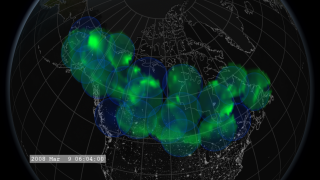
|
|
This movie zooms in on the Earth, revealing the placement of the ASI ground stations and their sky coverage. We observe the stations coming online as the night progresses.
Duration: 52.0 seconds
Available formats:
1280x720 (30 fps)
MPEG-4
4 MB
1280x720 (30 fps)
QUICKTIME
32 MB
1280x720 (30 fps)
MPEG-2
34 MB
512x288 (30 fps)
MPEG-1
9 MB
640x360 (30 fps)
QUICKTIME
8 MB
1280x720 (30 fps)
Frames (DateStamp)
320x180
PNG
239 KB
How to play our movies
|
|
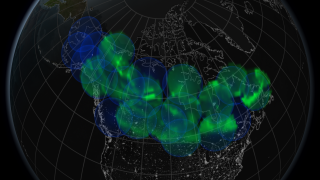
|
|
This version of the movie has no time stamps in the lower left corner.
Duration: 52.0 seconds
Available formats:
1280x720 (30 fps)
MPEG-4
12 MB
1280x720 (30 fps)
QUICKTIME
37 MB
1280x720 (30 fps)
MPEG-2
33 MB
512x288 (30 fps)
MPEG-1
9 MB
1280x720 (30 fps)
Frames (NoDateStamp)
320x180
PNG
238 KB
How to play our movies
|
|
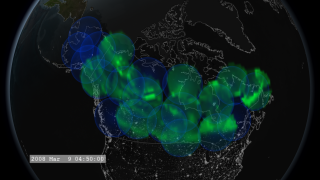
|
|
This version does not have a longitude/latitude grid on the Earth.
Duration: 52.0 seconds
Available formats:
1280x720 (30 fps)
MPEG-4
4 MB
1280x720 (30 fps)
MPEG-2
30 MB
512x288 (30 fps)
MPEG-1
8 MB
1280x720 (30 fps)
Frames (NoGrid)
320x180
PNG
218 KB
How to play our movies
|
|
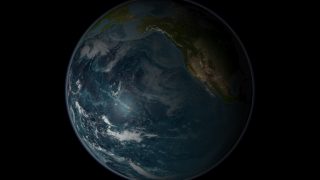
|
|
The movie opens with a view over the sunlit Pacific Ocean. The sun is just setting in California.
Available formats:
2560 x 1440
TIFF
2 MB
320 x 180
PNG
148 KB
|
|
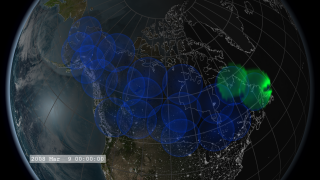
|
|
As the camera moves over northern Canada, already in night, we see the circles of sky coverage for the ASI ground stations (blue circles). The eastern-most stations have come online and we see the image data from these cameras (colored green).
Available formats:
2560 x 1440
TIFF
4 MB
320 x 180
PNG
267 KB
|
|
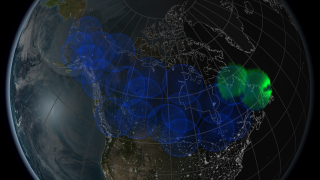
|
|
No time stamp. As the camera moves over northern Canada, already in night, we see the circles of sky coverage for the ASI ground stations (blue circles). The eastern-most stations have come online and we see the image data from these cameras (colored green).
Available formats:
2560 x 1440
TIFF
4 MB
320 x 180
PNG
267 KB
|
|
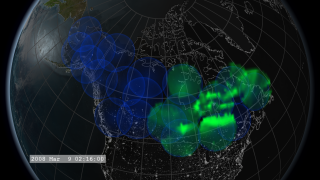
|
|
The night progresses and ASI cameras further west come online. The bright green structures from the aurora become evident.
Available formats:
2560 x 1440
TIFF
3 MB
320 x 180
PNG
264 KB
|
|
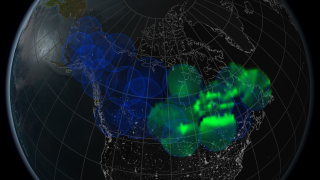
|
|
No time stamp. The night progresses and ASI cameras further west come online. The bright green structures from the aurora become evident.
Available formats:
2560 x 1440
TIFF
3 MB
320 x 180
PNG
263 KB
|
|
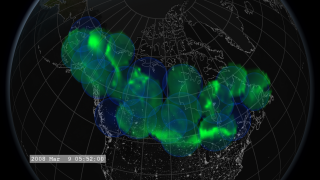
|
|
Hours later, almost every ASI camera is online.
Available formats:
2560 x 1440
TIFF
3 MB
320 x 180
PNG
253 KB
|
|
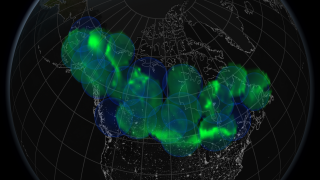
|
|
No time stamp. Hours later, almost every ASI camera is online.
Available formats:
2560 x 1440
TIFF
3 MB
320 x 180
PNG
252 KB
|
|
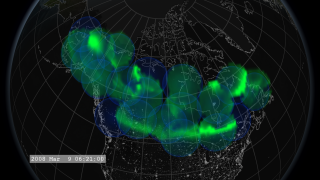
|
|
Aurora regions brighten as the substorm hits. Components of the auroral structures begin to change more quickly.
Available formats:
2560 x 1440
TIFF
3 MB
320 x 180
PNG
252 KB
|
|

|
|
No time stamp. Aurora regions brighten as the substorm hits. Components of the auroral structures begin to change more quickly.
Available formats:
2560 x 1440
TIFF
3 MB
320 x 180
PNG
250 KB
|
|
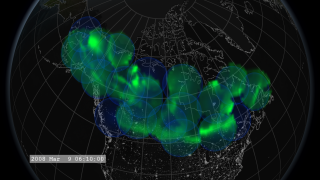
|
|
Further evolution of the substorm.
Available formats:
2560 x 1440
TIFF
3 MB
320 x 180
PNG
252 KB
|
|
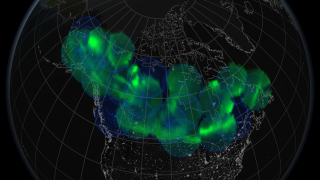
|
|
No time stamp. Further evolution of the substorm.
Available formats:
2560 x 1440
TIFF
3 MB
320 x 180
PNG
251 KB
|
|
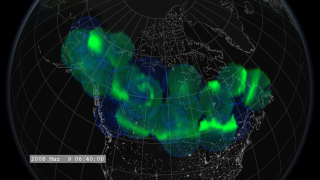
|
|
Further evolution of the substorm.
Available formats:
2560 x 1440
TIFF
3 MB
320 x 180
PNG
250 KB
|
|
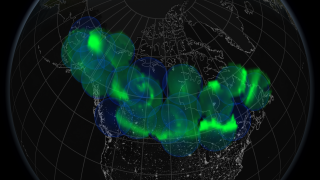
|
|
No time stamp. Further evolution of the substorm.
Available formats:
2560 x 1440
TIFF
3 MB
320 x 180
PNG
249 KB
|
|
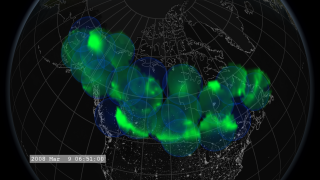
|
|
Further evolution of the substorm.
Available formats:
2560 x 1440
TIFF
3 MB
320 x 180
PNG
250 KB
160 x 80
PNG
61 KB
80 x 40
PNG
16 KB
|
|
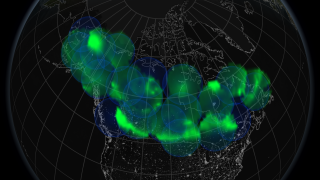
|
|
No time stamp. Further evolution of the substorm.
Available formats:
2560 x 1440
TIFF
3 MB
320 x 180
PNG
248 KB
|
|
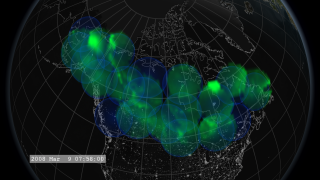
|
|
Further evolution of the substorm.
Available formats:
2560 x 1440
TIFF
3 MB
320 x 180
PNG
251 KB
|
|
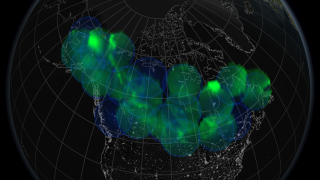
|
|
No time stamp. Further evolution of the substorm.
Available formats:
2560 x 1440
TIFF
3 MB
320 x 180
PNG
249 KB
|
|
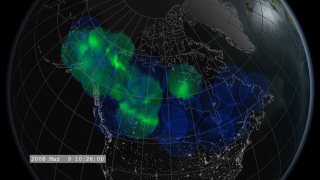
|
|
As local morning arrives, the ASI stations turn off, starting from the eastern portion of Canada.
Available formats:
2560 x 1440
TIFF
3 MB
320 x 180
PNG
261 KB
|
|
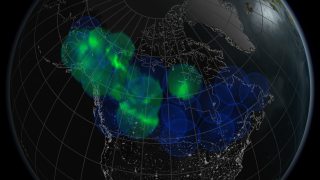
|
|
No time stamp. As local morning arrives, the ASI stations turn off, starting from the eastern portion of Canada.
Available formats:
2560 x 1440
TIFF
3 MB
320 x 180
PNG
260 KB
|
|
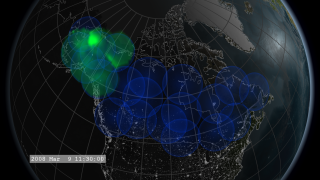
|
|
A few stations are still on in western Canada and Alaska.
Available formats:
2560 x 1440
TIFF
3 MB
320 x 180
PNG
262 KB
|
|
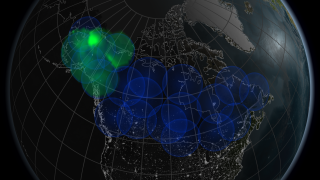
|
|
No time stamp. A few stations are still on in western Canada and Alaska.
Available formats:
2560 x 1440
TIFF
3 MB
320 x 180
PNG
261 KB
|
|
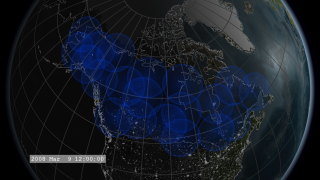
|
|
All ASI stations are now off.
Available formats:
2560 x 1440
TIFF
3 MB
320 x 180
PNG
264 KB
|
|
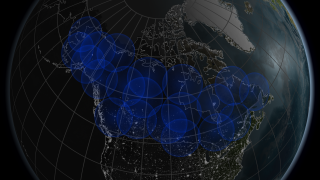
|
|
All ASI stations are now off.
Available formats:
2560 x 1440
TIFF
3 MB
320 x 180
PNG
263 KB
|
|
|
Back to Top
|